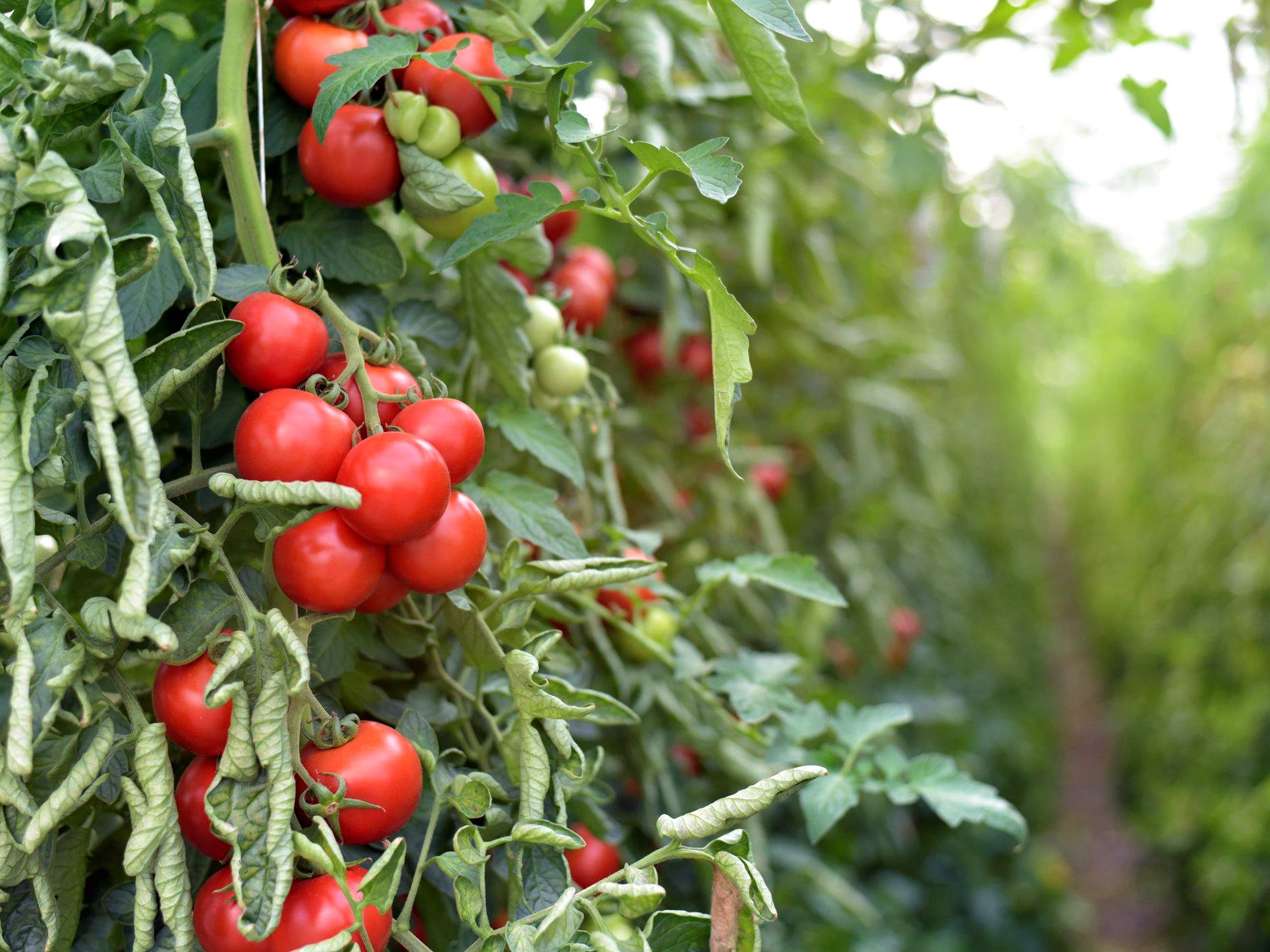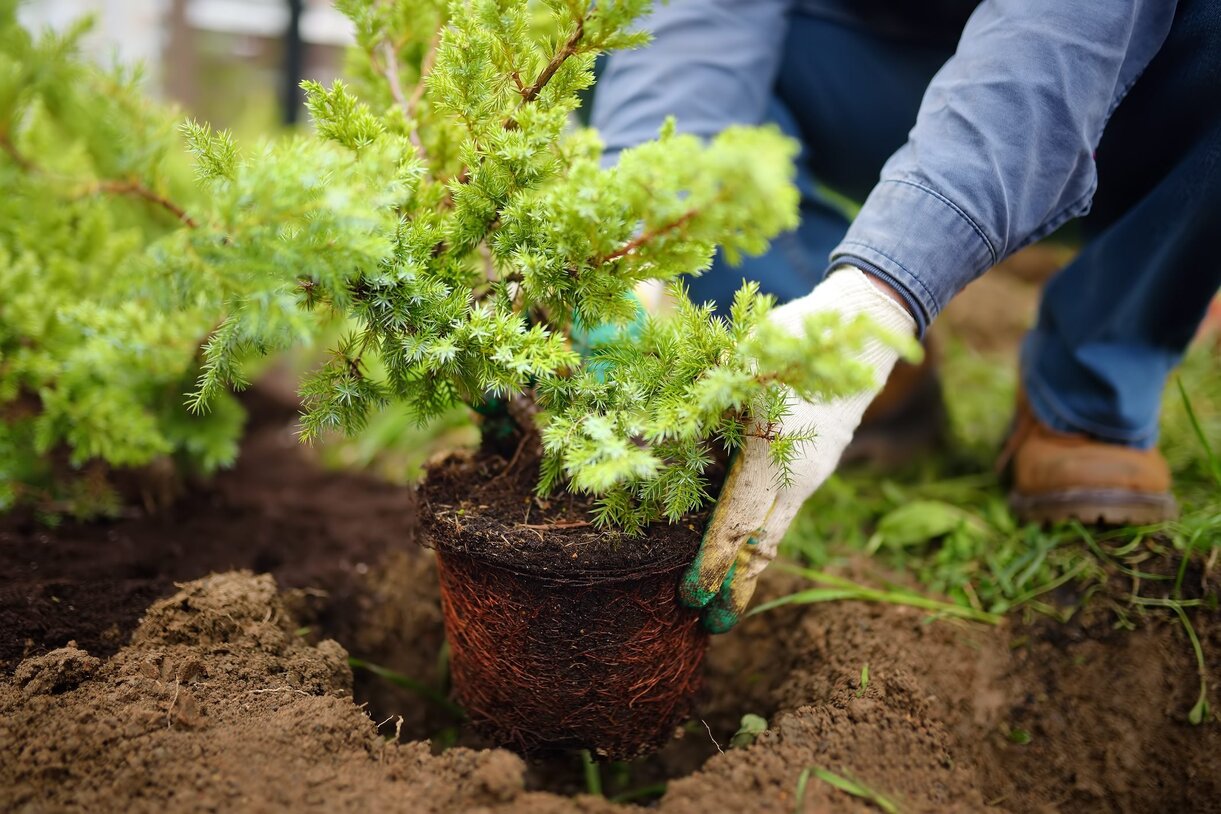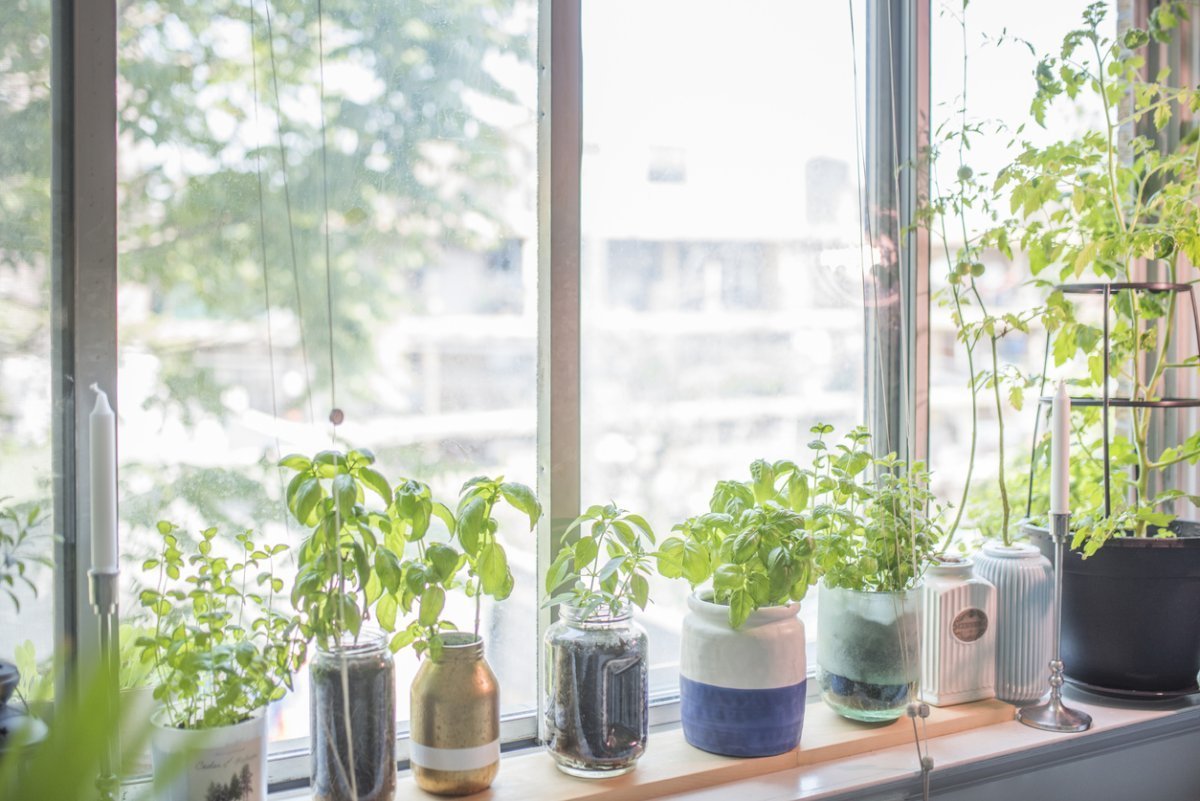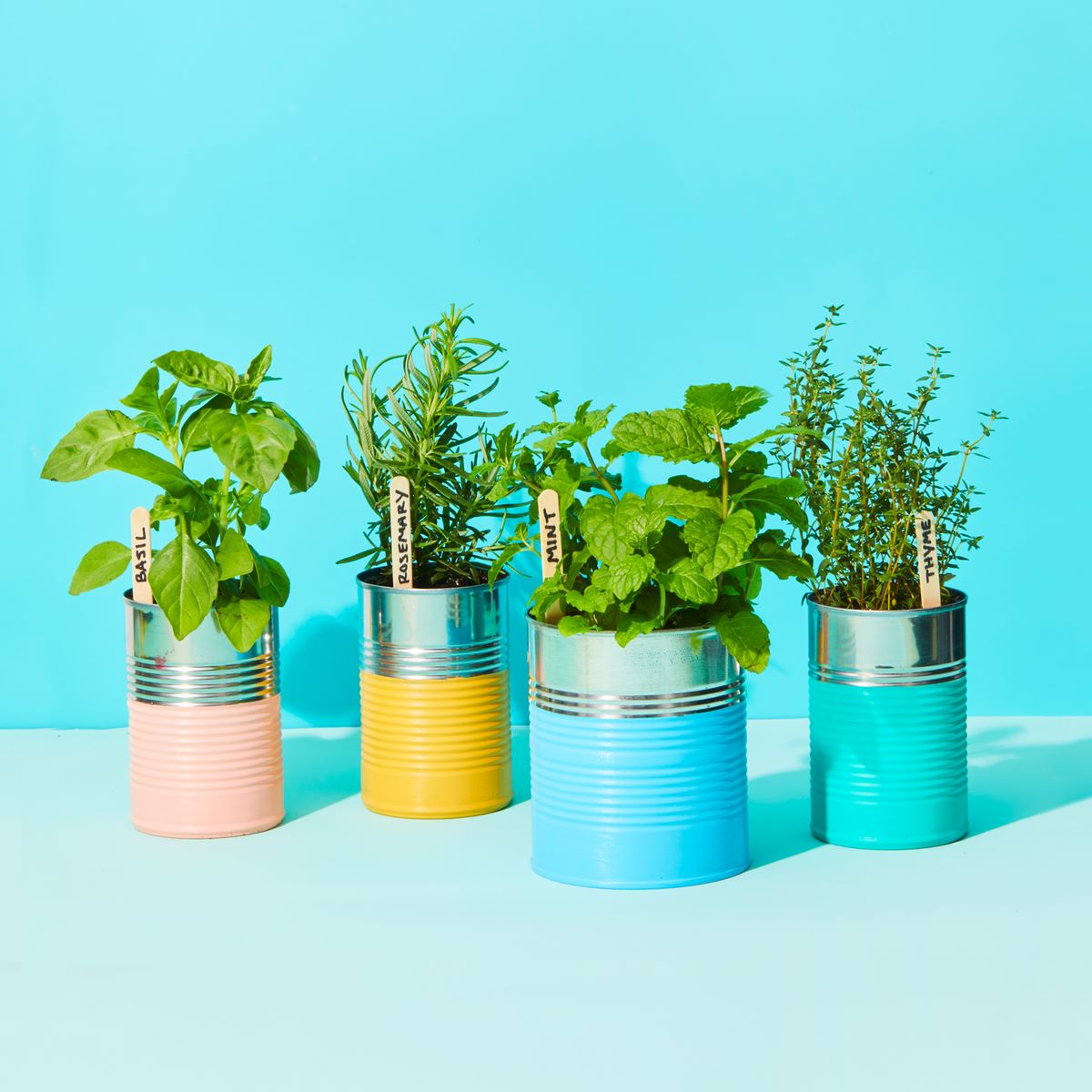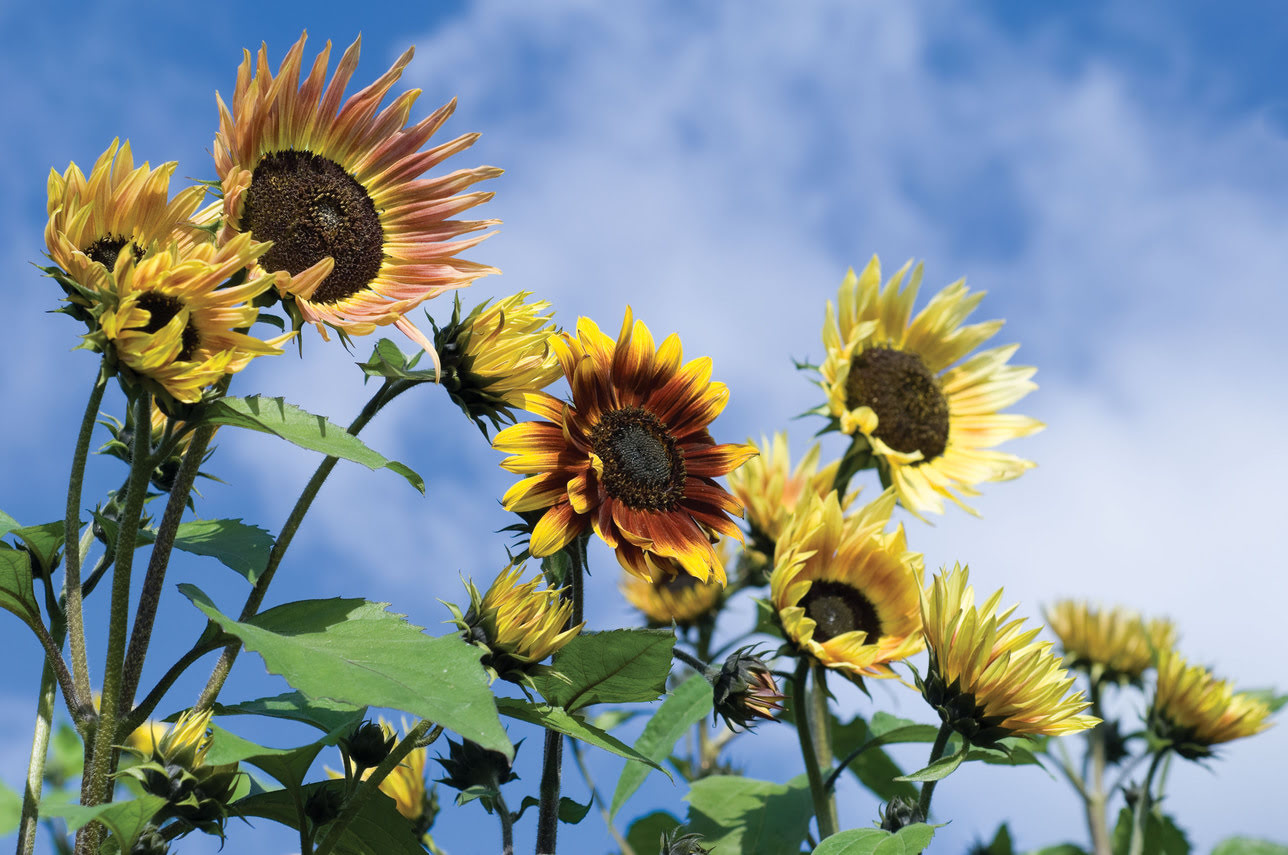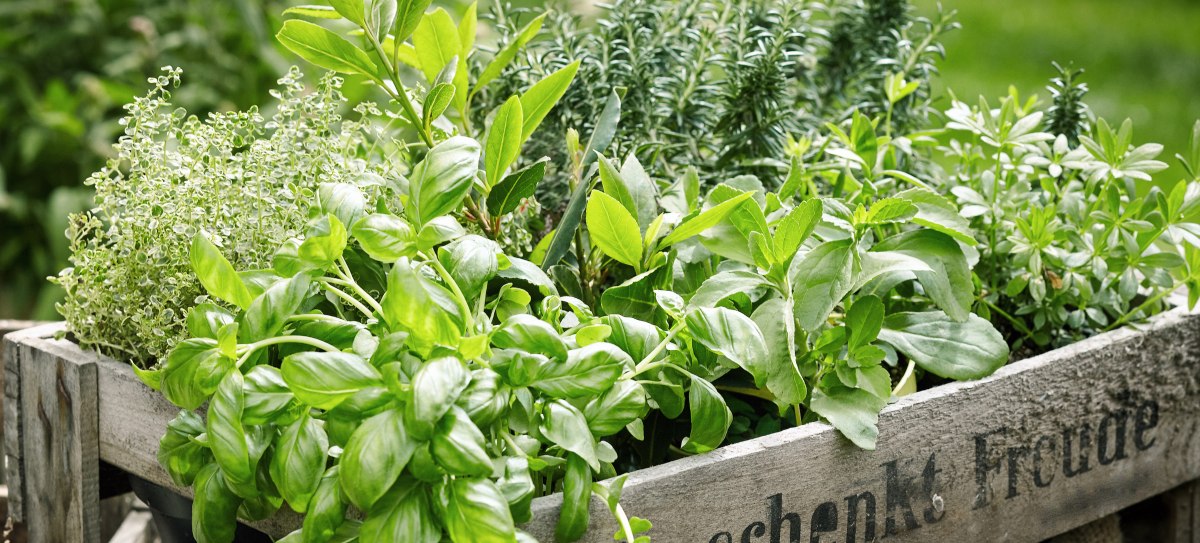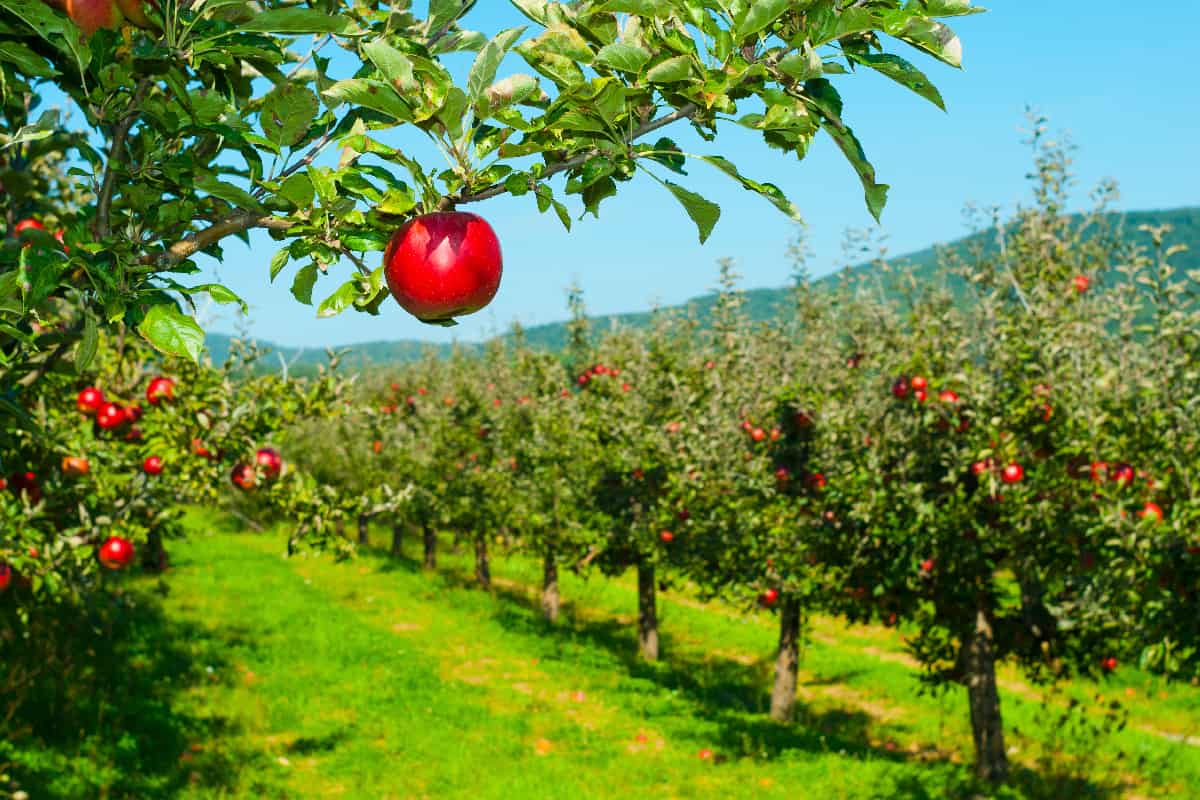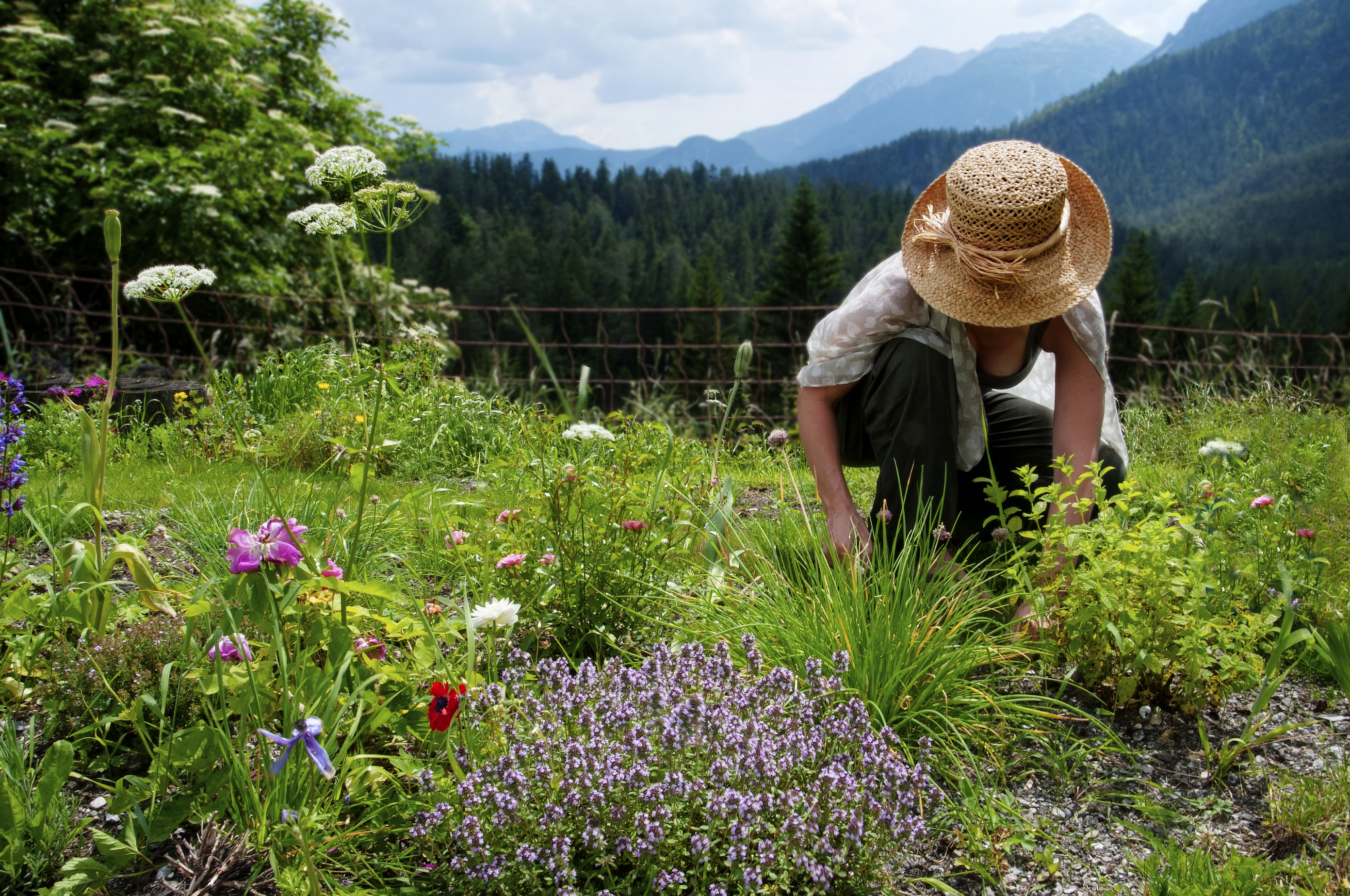Home>Types of Gardening>Edible Gardening>How To Grow Herbs In An Apartment
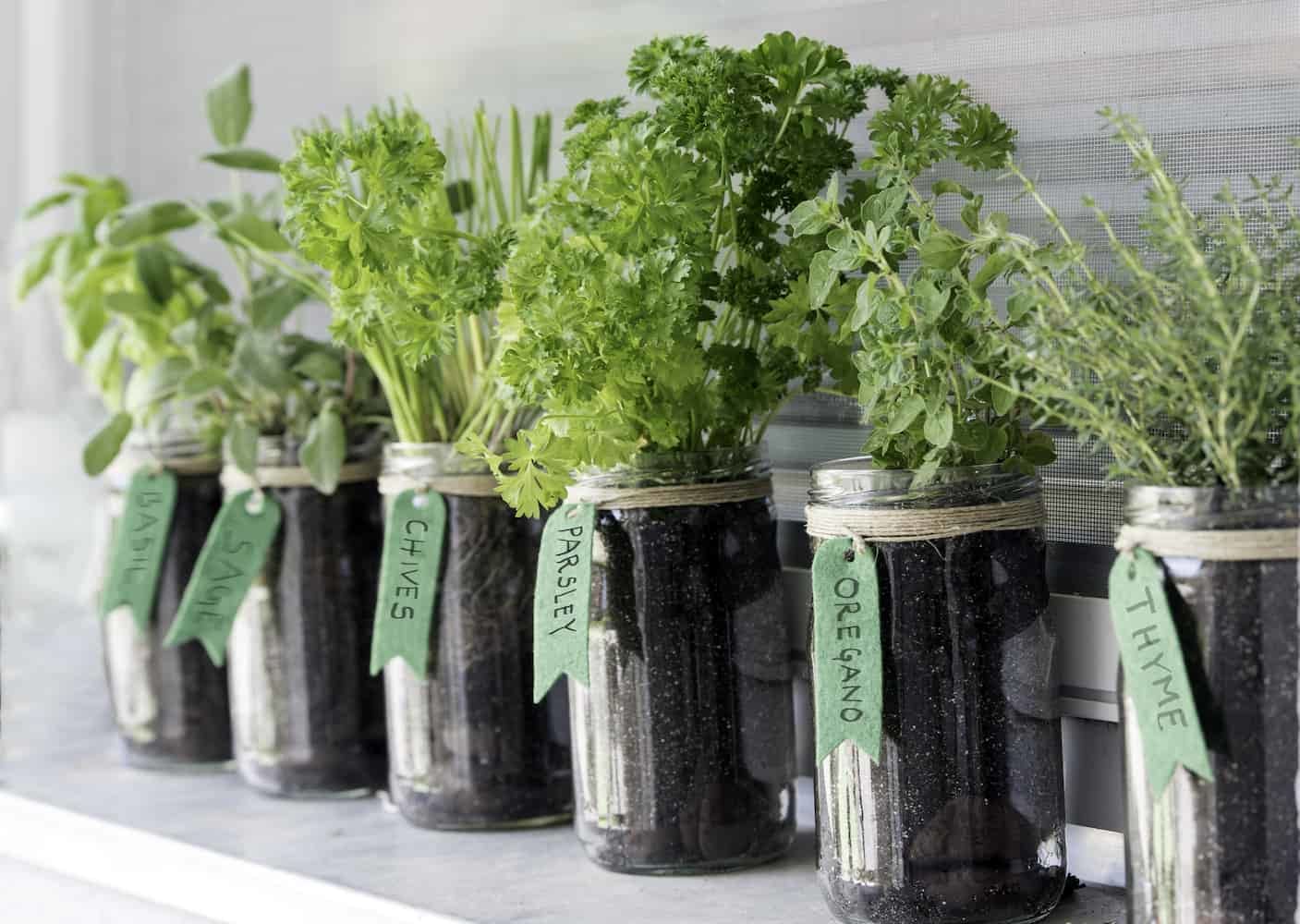

Edible Gardening
How To Grow Herbs In An Apartment
Modified: January 22, 2024
Learn how to grow edible herbs in your apartment with our comprehensive guide to apartment gardening. Start your own edible garden today!
(Many of the links in this article redirect to a specific reviewed product. Your purchase of these products through affiliate links helps to generate commission for Chicagolandgardening.com, at no extra cost. Learn more)
Table of Contents
- Introduction
- Benefits of Growing Herbs in an Apartment
- Choosing the Right Herbs for Your Apartment
- Selecting the Ideal Location for Your Herb Garden
- Containers and Potting Mixes for Apartment Herb Gardening
- Essential Factors for Successful Herb Growth in an Apartment
- Watering and Fertilizing Your Apartment Herb Garden
- Harvesting and Using Your Fresh Apartment Grown Herbs
- Common Problems and Troubleshooting in Apartment Herb Gardening
- Conclusion
Introduction
Welcome to the world of apartment gardening! If you think that living in an apartment means you can’t enjoy the pleasures of growing your own delicious and aromatic herbs, think again. With a little creativity and some basic knowledge, you can easily cultivate a thriving herb garden in the comfort of your own apartment.
Growing herbs in an apartment has become increasingly popular for a variety of reasons. Not only does it allow you to have fresh, organic herbs at your fingertips whenever you need them, but it also adds a touch of greenery and beauty to your living space. Whether you have a small balcony, a sunny window sill, or even limited space indoors, there are several options available to accommodate your herb garden needs.
Not only can apartment gardening provide you with a convenient and sustainable source of herbs, but it can also be a rewarding and therapeutic experience. The act of nurturing plants, watching them grow and flourish under your care, can be incredibly fulfilling. In addition, cooking with freshly harvested herbs can elevate the taste and aroma of your meals, taking your culinary endeavors to new heights.
In this comprehensive guide, we will explore everything you need to know to successfully grow herbs in your apartment. From selecting the right herbs to understanding the ideal growing conditions, we will cover all the necessary steps to ensure a bountiful harvest. We will also discuss common problems and provide troubleshooting tips to address any challenges you may encounter along the way. So, let’s roll up our sleeves and get started on your apartment herb garden adventure!
Benefits of Growing Herbs in an Apartment
Growing herbs in an apartment offers numerous advantages that go beyond the convenience of having fresh herbs readily available. Let’s explore some of the key benefits:
- Access to Fresh, Flavorful Herbs: By growing your own herbs, you can enjoy the unbeatable flavor and freshness that comes from harvesting them right before using them in your culinary creations. The vibrant flavors and aromas of freshly picked herbs can elevate any dish to a whole new level.
- Cost Savings: Buying fresh herbs at the grocery store can be expensive, and often, you end up with more than you actually need, leading to waste. By growing your own herbs in an apartment, you can save money in the long run and only harvest as much as you need, reducing food waste.
- Health Benefits: Herbs are packed with essential nutrients, antioxidants, and medicinal properties. Adding them to your diet can enhance your overall well-being and support a healthy lifestyle. Having access to homegrown herbs ensures that you’re getting the maximum nutritional benefits.
- Enhanced Aesthetics: A herb garden in your apartment can bring a touch of nature and greenery to your living space. Not only does it add visual appeal, but it can also create a soothing and calming atmosphere, promoting a sense of well-being and relaxation.
- Convenient and Sustainable: Having your own herb garden in your apartment allows you to conveniently harvest herbs whenever you need them, rather than making frequent trips to the grocery store. This reduces your carbon footprint and promotes sustainability by minimizing transportation and packaging waste.
- Creative Expression: Growing herbs in an apartment allows you to explore your creativity and experiment with different herb varieties and combinations. You can customize your herb garden to suit your taste preferences and culinary needs, creating a unique and personalized collection.
As you can see, growing herbs in an apartment is not only practical but also offers a range of benefits that extend beyond mere convenience. From cost savings and health benefits to adding beauty to your living space and promoting sustainability, apartment herb gardening is a win-win on many fronts.
Choosing the Right Herbs for Your Apartment
When it comes to choosing which herbs to grow in your apartment, it’s important to consider a few factors to ensure successful growth and maximize your herb garden’s potential. Here are some considerations to keep in mind:
- Space Availability: Evaluate the available space in your apartment and determine how much room you have for your herb garden. If you have limited space, consider growing herbs that are more compact and have a smaller growth habit.
- Light Requirements: Assess the amount of natural light your apartment receives. Most herbs require at least six hours of direct sunlight per day to thrive. If your apartment has limited sunlight, choose herbs that can tolerate partial shade or invest in artificial grow lights.
- Usage and Preference: Consider the herbs you use most frequently in your cooking and those that appeal to your taste. By growing herbs that you regularly use and enjoy, you will ensure that your garden is both practical and enjoyable.
- Growing Difficulty: If you’re a beginner or have limited gardening experience, opt for herbs that are easy to grow and maintain. Some beginner-friendly herbs include basil, mint, parsley, and chives.
- Indoor Adaptability: Certain herbs are better suited for indoor growing conditions. Herbs that naturally flourish in indoor environments include rosemary, thyme, oregano, and sage.
- Companion Planting: Consider companion planting strategies to maximize space and enhance growth. Some herbs have a synergistic effect when planted together, such as basil and tomatoes or parsley and cilantro.
- Climate Adaptability: If you live in an area with extreme temperatures or have fluctuating indoor temperatures, choose herbs that can tolerate these conditions. Some herbs, like lavender and lemon balm, are more resilient in varying climates.
Remember, the key is to choose herbs that align with your specific circumstances and preferences. By considering space availability, light requirements, usage, beginner-friendliness, indoor adaptability, companion planting, and climate adaptability, you can create a diverse and thriving herb garden in your apartment.
Selecting the Ideal Location for Your Herb Garden
Finding the right location for your apartment herb garden is crucial for the success of your plants. Here are some factors to consider when selecting the ideal spot:
- Sunlight: Most herbs thrive in full sun, so choose a location that receives at least six to eight hours of direct sunlight each day. Pay attention to the direction the windows face and consider the amount of sunlight they receive throughout the day.
- Windowsills: Utilizing windowsills is a great option for apartment herb gardening. Place your pots or containers near well-lit windows, ensuring that the herbs receive adequate sunlight. Remember to rotate the pots occasionally for even growth.
- Balconies or Patios: If you have access to a balcony or patio, take advantage of the outdoor space. Position your herb garden where it can receive ample sunlight and fresh air. Be cautious of extreme weather conditions and consider using containers that can be easily moved indoors if necessary.
- Vertical Gardening: If space is limited, consider vertical gardening techniques. Install wall-mounted planters or utilize hanging baskets to maximize space utilization. This way, you can take advantage of vertical surfaces to grow herbs without taking up too much floor space.
- Artificial Lighting: If your apartment lacks adequate natural light, consider using artificial lighting. Special grow lights can provide the necessary light spectrum for herb growth. Place the lights close to the plants and ensure they are on for around 12-16 hours per day.
- Temperature and Humidity: Consider the overall climate conditions in your apartment. Make sure the location you choose has a stable temperature and humidity level. Keep in mind that some herbs prefer drier conditions, while others thrive in more humid environments.
By keeping these factors in mind, you can identify the ideal location for your apartment herb garden. Remember, the key is to provide your herbs with the right amount of sunlight, fresh air, and stable environmental conditions to ensure their growth and overall health.
Containers and Potting Mixes for Apartment Herb Gardening
When it comes to apartment herb gardening, choosing the right containers and potting mixes is essential for the health and growth of your herbs. Here are some considerations to keep in mind:
- Container Type: Select containers that are suitable for the size and growth habit of your herbs. Options include clay pots, plastic containers, hanging baskets, or even repurposed items like mason jars or tin cans. Make sure the containers have drainage holes to prevent waterlogged soil.
- Size: Consider the eventual size of your herbs when choosing container sizes. Most herbs have shallow root systems and do well in smaller to medium-sized pots or containers. However, larger herbs like rosemary may require bigger containers to accommodate their growth.
- Potting Mix: Use a high-quality potting mix specifically formulated for container gardening. Avoid using garden soil, as it can be heavy and may not provide adequate drainage. Look for mixes that are rich in organic matter and have good water retention properties.
- Drainage: Proper drainage is crucial to prevent waterlogging and root rot. Ensure that your containers have drainage holes at the bottom. You can add a layer of small rocks or broken pottery pieces at the bottom of the container to facilitate proper drainage.
- Watering: Different herbs have varying water requirements, so it’s important to monitor the moisture level of the potting mix. Water your herbs when the top inch of soil feels dry to the touch. Avoid overwatering, as it can lead to root rot. Always empty the excess water from the saucer or tray underneath the pots.
- Fertilization: Herbs grown in containers may require regular fertilization. Choose a balanced organic fertilizer or a slow-release granular fertilizer specifically formulated for herbs. Follow the instructions on the fertilizer package, and avoid over-fertilizing, as it can lead to excessive foliage growth with reduced flavor.
- Organic Practices: Consider using organic potting mixes and fertilizers to cultivate your herbs. Organic gardening practices minimize the use of synthetic chemicals, promote better soil health, and result in healthier and more flavorful herbs.
Remember, the choice of containers and potting mixes plays a vital role in creating a suitable growing environment for your apartment herb garden. By selecting the right containers, using quality potting mixes, ensuring proper drainage, and practicing appropriate watering and fertilization techniques, you can provide your herbs with the best possible conditions for healthy growth and abundant flavor.
Essential Factors for Successful Herb Growth in an Apartment
Creating the ideal conditions for your apartment herb garden is crucial for successful herb growth. Here are some key factors to consider:
- Sunlight: Herbs require ample sunlight to thrive. Place your herb garden in a location that receives at least six to eight hours of direct sunlight each day. If natural light is limited, consider using artificial grow lights to supplement the lighting.
- Temperature: Most herbs prefer moderate temperatures ranging from 60°F to 75°F (15°C to 24°C). Keep your apartment at a comfortable temperature for both yourself and your herbs. Avoid placing them near drafts, heating vents, or areas with extreme temperature fluctuations.
- Air Circulation: Good air circulation is essential for reducing the risk of diseases and pests. Ensure that there is proper ventilation in the area where your herb garden is located. If needed, use fans or open windows to promote airflow.
- Watering: Water your herbs when the top inch of soil feels dry to the touch. Use room temperature water and avoid overwatering, as excessive moisture can lead to root rot. Maintain proper drainage to prevent waterlogging and ensure that excess water can escape from the containers.
- Humidity: Most herbs prefer moderate humidity levels. If your apartment tends to be too dry, consider using a humidifier or placing a tray of water near your herb garden to increase humidity. If it’s too humid, enhance air circulation to prevent fungal issues.
- Pruning and Harvesting: Regular pruning helps maintain the bushiness and productivity of your herbs. Pinch off the tips of the stems to encourage branching and remove any yellowing or diseased leaves. Harvest your herbs regularly to promote new growth and prevent them from becoming leggy.
- Pest Control: Keep an eye out for common pests like aphids, mealybugs, and spider mites. Inspect your herbs regularly and take prompt action if you notice any signs of infestation. Consider using organic pest control methods like neem oil or insecticidal soap to protect your herbs.
- Rotation: To ensure even growth and prevent plants from leaning towards the light source, rotate your herb pots every few days. This encourages uniform exposure to sunlight and promotes balanced growth.
By considering these essential factors, you can create an optimal environment for your apartment herb garden. Providing sufficient sunlight, maintaining appropriate temperature and humidity levels, watering correctly, promoting air circulation, practicing proper pruning and harvesting, and implementing pest control measures will contribute to the successful growth and vitality of your herbs.
Watering and Fertilizing Your Apartment Herb Garden
Proper watering and fertilizing techniques are essential for maintaining a healthy and thriving apartment herb garden. Here’s what you need to know:
Watering:
Water your herbs when the top inch of the soil feels dry to the touch. Avoid overwatering, as it can lead to root rot. Here are some tips for effective watering:
- Consistency: Provide consistent moisture to your herbs by watering them regularly. Aim for a balance between watering enough to keep the soil moist, but not soggy.
- Watering Method: Use room temperature water and water the soil directly at the base of the plants. Avoid getting the leaves wet to prevent the risk of fungal diseases.
- Drainage: Ensure your herb containers have proper drainage holes to prevent waterlogging. Excess water should be able to escape freely from the containers to avoid waterlogged roots.
- Monitoring: Check the moisture level of the soil regularly. Stick your finger into the soil up to the first knuckle to determine if it needs watering. If it feels dry at that depth, it’s time to water.
- Seasonal Adjustment: Be mindful of seasonal changes that can affect watering needs. Adjust your watering schedule accordingly, keeping in mind that herbs may require less water during cooler months or more water during hot summer days.
Fertilizing:
Proper fertilization helps provide essential nutrients for your herb garden to thrive. Here are some guidelines for fertilizing your apartment herb garden:
- Fertilizer Selection: Choose a balanced organic fertilizer or a slow-release granular fertilizer specifically formulated for herbs. Look for options that are rich in nutrients like nitrogen, phosphorus, and potassium.
- Application Frequency: Follow the instructions on the fertilizer package for the recommended application frequency. In general, herbs benefit from monthly or bi-monthly feedings during the active growing season.
- Application Method: Apply the fertilizer evenly around the base of the plants, following the recommended dosage. Avoid direct contact with the leaves to prevent burning or damage.
- Organic Alternatives: Consider using organic fertilizers like compost, worm castings, or organic matter such as seaweed or fish emulsion. These options provide slow-release nutrients and help improve the overall soil health.
- Observation: Monitor your herbs for any signs of nutrient deficiencies or excessive fertilization. Adjust the fertilizer application accordingly based on the specific needs of your herbs.
Remember, proper watering and fertilizing practices are crucial for the health and productivity of your herb garden. By providing consistent moisture, monitoring watering needs, choosing the right fertilizer, and following proper application techniques, you can ensure that your apartment herb garden thrives and yields an abundant harvest.
Harvesting and Using Your Fresh Apartment Grown Herbs
One of the most rewarding aspects of apartment herb gardening is the joy of harvesting your fresh herbs and incorporating them into your meals. Here are some tips for harvesting and using your apartment-grown herbs:
- Harvesting Guidelines: Harvest your herbs when they have reached a sufficient size and are producing abundant foliage. Avoid harvesting more than one-third of the plant at a time, as this can hinder its growth. For leafy herbs like basil or mint, pinch off the top leaves and avoid cutting into the woody stems.
- Timing: The best time to harvest herbs is in the morning when the leaves contain the highest concentration of essential oils. This is when they are at their most flavorful and aromatic.
- Harvesting Methods: Use sharp scissors or pruning shears to cut the stems just above a leaf node or stem junction. This encourages the plant to branch out and continue producing new growth.
- Preservation: If you have a surplus of herbs, consider preserving them for future use. Herbs can be dried, frozen, or even preserved in oils or vinegars. Each herb has its own ideal preservation method, so research and experiment to find what works best for each herb.
- Utilization: Put your freshly harvested herbs to good use in the kitchen. Experiment with incorporating them into your favorite recipes such as salads, marinades, dressings, sauces, soups, and stews. They can also be used to infuse oils, create flavorful herb butters, or as a garnish to enhance the visual appeal of your dishes.
- Flavor Combinations: Get creative with mixing and matching different herbs to create unique flavor combinations. For example, basil pairs well with tomatoes, while rosemary complements roasted vegetables. Consider experimenting with your herb garden to find new and exciting flavor profiles.
- Harvesting Ethics: Practice responsible harvesting by not taking more herbs than you need. Allow your plants to continue growing and thriving so that you can enjoy a steady supply of fresh herbs throughout the growing season.
Harvesting and using your fresh apartment-grown herbs not only adds incredible flavor to your dishes but also promotes a connection with nature and the food you consume. The satisfaction of harvesting your own herbs and transforming them into delicious culinary creations is truly a rewarding experience.
Common Problems and Troubleshooting in Apartment Herb Gardening
Just like any type of gardening, apartment herb gardening can sometimes come with its fair share of challenges. Here are some common problems you may encounter and tips for troubleshooting:
- Poor Growth or Leggy Plants: If your herbs are not growing well or become leggy, it may be due to insufficient sunlight. Ensure that your herbs are receiving the recommended 6-8 hours of direct sunlight each day. If natural light is limited, consider using artificial grow lights to supplement.
- Yellowing Leaves: Yellowing leaves can be a sign of overwatering, underwatering, or nutrient deficiencies. Check the moisture level of the soil and adjust your watering accordingly. Ensure that your herbs are getting the necessary nutrients through proper fertilization and organic matter enrichment in the potting mix.
- Pests: Common pests in apartment herb gardens include aphids, mealybugs, and spider mites. Regularly inspect your herbs for any signs of pests, such as distorted leaves or webbing. If you notice an infestation, treat it immediately with organic pest control methods like insecticidal soap or neem oil.
- Fungal Diseases: Excessive moisture and poor air circulation can lead to fungal diseases like powdery mildew or root rot. Ensure proper drainage in your containers, avoid overwatering, and provide good air circulation around your herbs. If fungal issues arise, treat them with organic fungicides or adjust the watering schedule.
- Herbs Bolting: Bolting is when herbs prematurely produce flowers and seeds, resulting in a decline in leaf quality. This can be caused by high temperatures or other environmental stressors. To prevent bolting, provide moderate temperatures, consistent watering, and harvest regularly to encourage fresh growth.
- Soil Issues: Over time, potting mixes can become compacted, affecting drainage and nutrient absorption. Periodically, refresh the potting mix by adding compost or a new layer of potting mix. This will help provide adequate nutrients and promote healthy root growth.
- Herb Incompatibility: Some herbs are not compatible when planted together due to differences in their growth habits or nutrient requirements. Monitor your herb garden and ensure that each herb is given the space and conditions it needs to thrive. Consider companion planting guides to maximize compatibility and growth.
Remember that every garden will face its unique challenges, and patience is key when troubleshooting issues. Regular observation and proactive measures, such as proper watering, adequate sunlight, pest control, and healthy soil management, will go a long way in maintaining a successful apartment herb garden.
Conclusion
Congratulations on embarking on your apartment herb gardening journey! In this comprehensive guide, we have explored the various aspects of successfully growing herbs in an apartment setting. From choosing the right herbs and selecting the ideal location to understanding watering and fertilization techniques, we have covered the essential steps to help you cultivate a thriving herb garden in your apartment.
Apartment herb gardening offers a range of benefits, from providing access to fresh, flavorful herbs to saving money and adding aesthetic appeal to your living space. It allows you to take control of your food by growing your own organic herbs, promoting sustainability and reducing your carbon footprint in the process.
Remember to pay attention to crucial factors such as sunlight, temperature, and air circulation to create optimal growing conditions for your herbs. By practicing proper watering and fertilizing techniques, as well as proactive pest control and observing good harvesting habits, you can ensure the health and longevity of your herb garden.
Through the joys of harvesting and utilizing your freshly grown herbs in your cooking, you’ll experience the satisfaction of farm-to-table cuisine, elevating your culinary creations with vibrant flavors and aromatic nuances. With a little patience, creativity, and care, your apartment herb garden will become a source of delight and nourishment.
So, roll up your sleeves, gather your tools, and let your green thumb flourish in your apartment herb garden. Enjoy the magic of nurturing your plants and savor the rewards of homegrown herbs that will enhance your culinary experiences for years to come.
